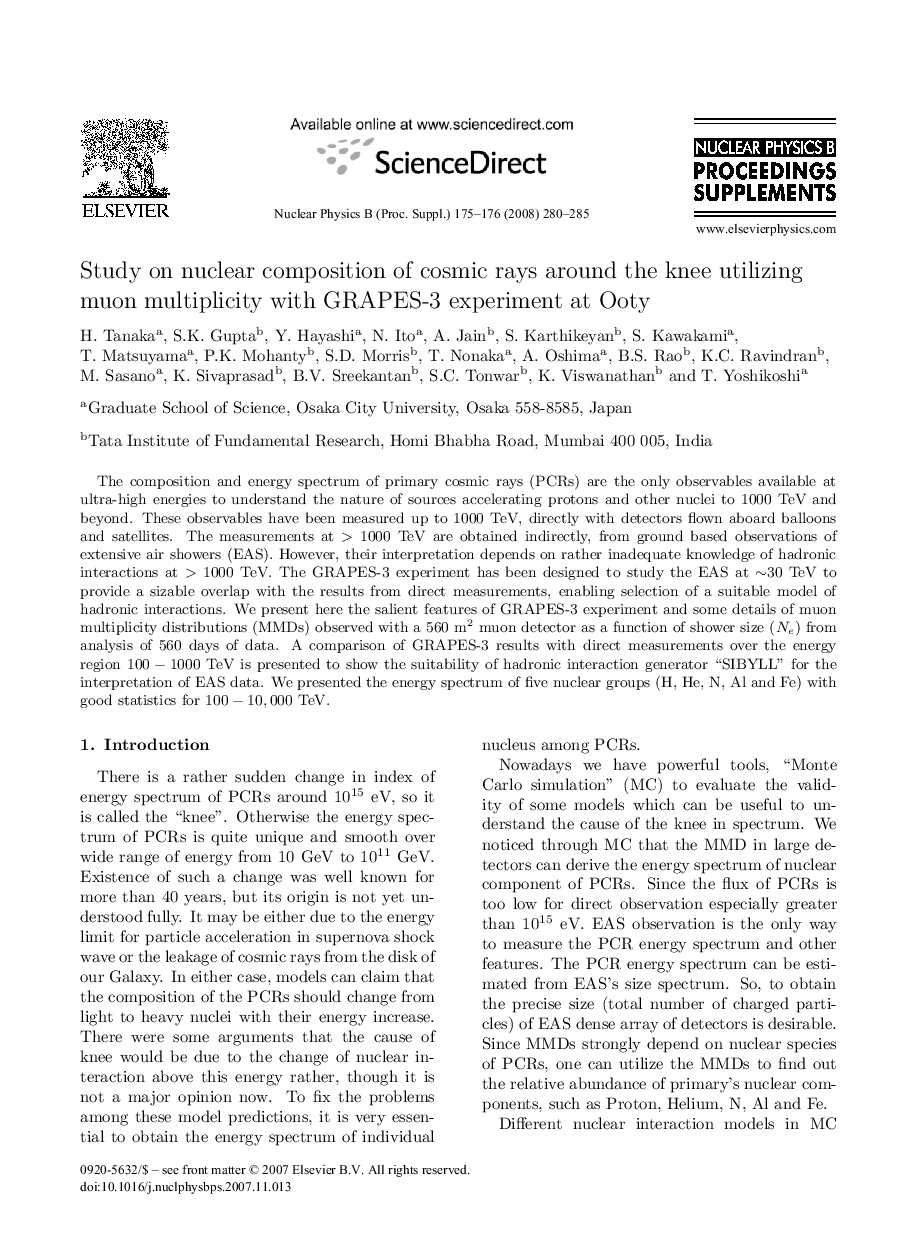| Article ID | Journal | Published Year | Pages | File Type |
|---|---|---|---|---|
| 1849605 | Nuclear Physics B - Proceedings Supplements | 2008 | 6 Pages |
The composition and energy spectrum of primary cosmic rays (PCRs) are the only observables available at ultra-high energies to understand the nature of sources accelerating protons and other nuclei to 1000 TeV and beyond. These observables have been measured up to 1000 TeV, directly with detectors flown aboard balloons and satellites. The measurements at >1000 TeV are obtained indirectly, from ground based observations of extensive air showers (EAS). However, their interpretation depends on rather inadequate knowledge of hadronic interactions at >1000 TeV. The GRAPES-3 experiment has been designed to study the EAS at ∼30 TeV to provide a sizable overlap with the results from direct measurements, enabling selection of a suitable model of hadronic interactions. We present here the salient features of GRAPES-3 experiment and some details of muon multiplicity distributions (MMDs) observed with a 560 m2 muon detector as a function of shower size (Ne) fro analysis of 560 days of data. A comparison of GRAPES-3 results with direct measurements over the energy region 100 – 1000 TeV is presented to show the suitability of hadronic interaction generator “SIBYLL” for the interpretation of EAS data. We presented the energy spectrum of five nuclear groups (H, He, N, Al and Fe) with good statistics for 100 – 10, 000 TeV.
